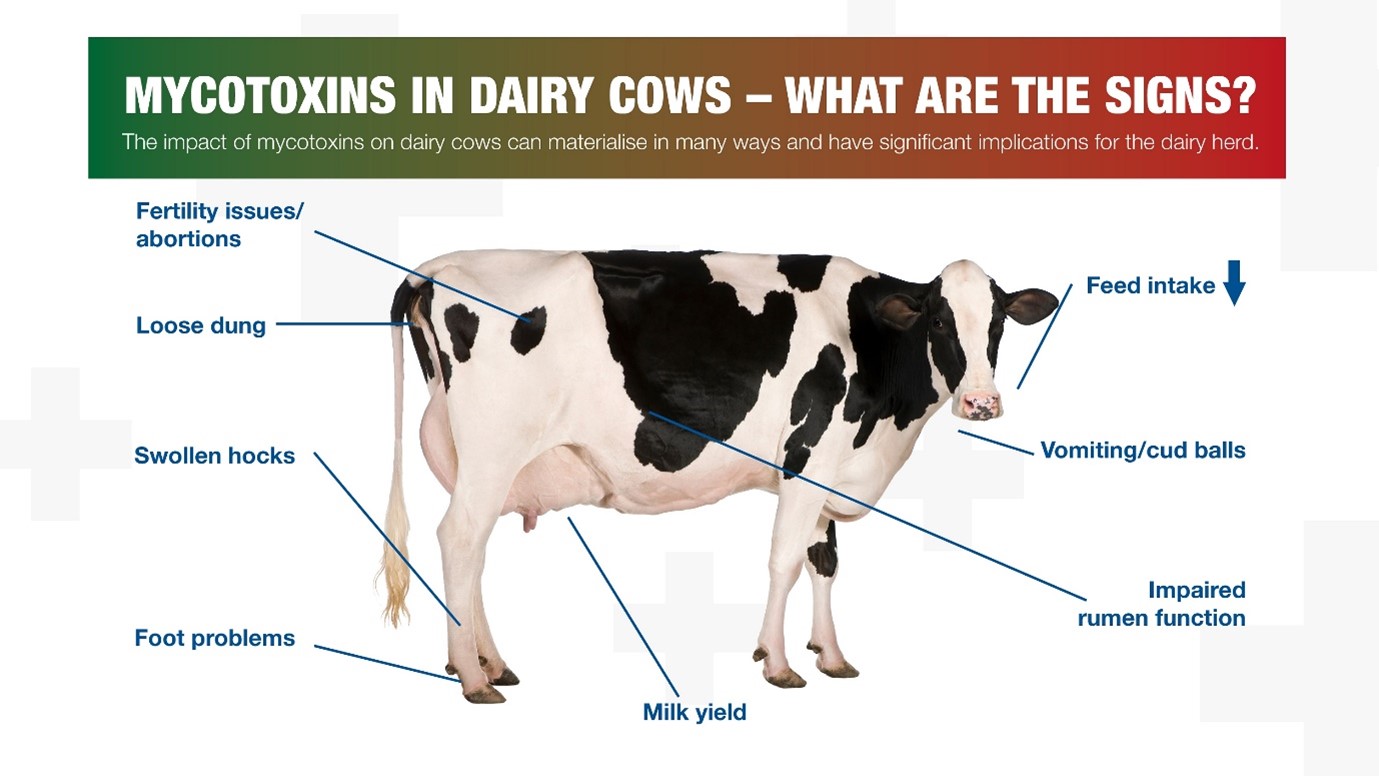Quantifying the level of mycotoxin contamination in your feeds is always difficult, as there are >400 different species of mycotoxins, all with varying levels of toxicity, and they may not be in every part of the silage clamp or TMR that we sample! Generally speaking, any plant with a flowering head (such as maize or wheat) could have developed fungi in the field, under stress conditions such as drought or wet weather, which produce the ‘in field’ mycotoxins on the plant. When harvested, the mycotoxins remain in the silage, and in some cases, further mould/fungi growth in the clamp can lead to more ‘storage’ mycotoxin production.
What are the main symptoms of Mycotoxin damage?
- Reduction in dry matter intake
- Reduced rumen function – cud balls
- Poor fertility, particularly cystic ovaries and cycle abnormalities
Types of mycotoxins and how they can affect your herd
The Type A Trichothecenes will potentially cause issues such as loose/variable dung, reduce feed intake, cause intestinal damage, alter rumen functions and result in poor nutrient digestion. We can also see issues with conception rates, embryo health.
The Type B Trichothecenes will potentially cause issues such as loose/variable dung, reduce feed intake, cause intestinal damage, alter rumen functions and result in poor nutrient digestion. We can also see stillborn births with the Type B. These symptoms can lead to lower milk production. Cows may also become lethargic and their immune system can also be suppressed.
Zearalenone can cause issues with reduced reproductive overall performance of cows, resulting in delayed sexual maturity or altered conception rates, irregular heats. We can also see cystic cows or early embryonic deaths.


The emerging Mycotoxins contain toxins such as Moniliformin, Alternariol and Tenuazonic acid, these can cause issues such as damage to the heart muscle, including myocardial lesions and increased relative heart weights, also muscular weakness, respiratory distress, decreased feed intake, BW gains, liver damage, diarrhoea, vomiting, haemorrhages, muscle tremor and convulsion and can have a negative impact on reproductive functions.
Other Penicillium mycotoxins may decrease beneficial microbial populations in the rumen, decrease synthesis of volatile fatty acids and change microbial protein production. Such effects may result in digestive disorders, a decrease in animal performance and altered milk production or milk quality. Suppression of the immune system could also occur.
Fusaric acid can play a part in reducing intakes and efficiency and causing lameness along with feed refusal and udder edemas.
How can mycotoxins be dealt with on-farm?
MYCOSORB A+ reduces mycotoxin absorption, negating the effects on production:
- Proven Broad spectrum binder tackling most mycotoxins
- Fast acting, and at low doses (50-150g/cow)
- Proven by scientific research – 146 peer-reviewed studies
- 50g/cow costs approx. 10p/head/day – ROI of 2.5:1 (increased milk profit over cost)












